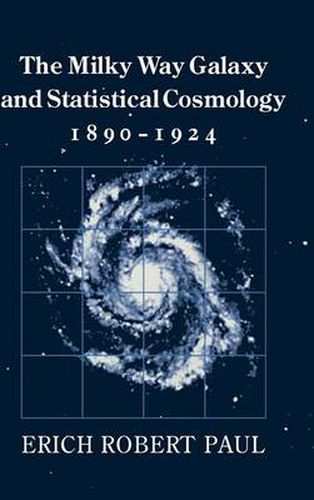Readings Newsletter
Become a Readings Member to make your shopping experience even easier.
Sign in or sign up for free!
You’re not far away from qualifying for FREE standard shipping within Australia
You’ve qualified for FREE standard shipping within Australia
The cart is loading…






Between the years 1890 and 1924, the dominant view of the Universe suggested a cosmology largely foreign to contemporary ideas. First, astronomers believed they had confirmed that the Sun was roughly in the center of our star system, the Milky Way Galaxy. Second, considerable evidence indicated that the size of the Galaxy was only about one-third the value now accepted by today’s astronomers. Third, it was thought that interstellar space was completely transparent, that there was no absorbing material between the stars. Fourth, astronomers believed that the Universe was composed of numerous star systems comparable to the Milky Way Galaxy. The method that provided this picture and came to dominate cosmology was ‘statistical’ in nature, because it was based on the counts of stars and their positions, motions, brightnesses, and stellar spectra. Drawing on previously neglected archival material, Professor Paul describes the rise of this statistical cosmology in light of developments in nineteenth-century astronomy and explains how this cosmology set the stage for many of the most significant developments we associate with the astronomy of the twentieth century. Statistical astronomy was the crucial link that provided much of modern astronimical science with its foundation.
$9.00 standard shipping within Australia
FREE standard shipping within Australia for orders over $100.00
Express & International shipping calculated at checkout
Between the years 1890 and 1924, the dominant view of the Universe suggested a cosmology largely foreign to contemporary ideas. First, astronomers believed they had confirmed that the Sun was roughly in the center of our star system, the Milky Way Galaxy. Second, considerable evidence indicated that the size of the Galaxy was only about one-third the value now accepted by today’s astronomers. Third, it was thought that interstellar space was completely transparent, that there was no absorbing material between the stars. Fourth, astronomers believed that the Universe was composed of numerous star systems comparable to the Milky Way Galaxy. The method that provided this picture and came to dominate cosmology was ‘statistical’ in nature, because it was based on the counts of stars and their positions, motions, brightnesses, and stellar spectra. Drawing on previously neglected archival material, Professor Paul describes the rise of this statistical cosmology in light of developments in nineteenth-century astronomy and explains how this cosmology set the stage for many of the most significant developments we associate with the astronomy of the twentieth century. Statistical astronomy was the crucial link that provided much of modern astronimical science with its foundation.